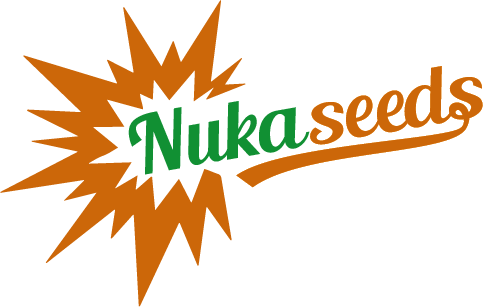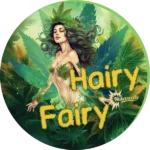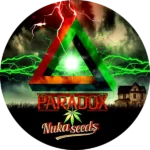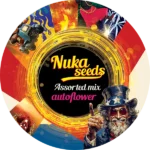English
You’ve probably heard of dopamine, the chemical responsible for feeling good after cannabis. Over the past few decades, many media outlets have explained that THC causes a dopamine rush that gives recreational cannabis users the high they crave. For over forty years, addiction scientists have adopted a unified theory, the dopamine theory, which states that almost all addictive substances and activities flood the limbic brain with dopamine.
Here is how the National Institute on Drug Abuse explains this theory: THC, acting through cannabinoid receptors, also activates the brain’s reward system, which includes regions governing the response to pleasurable, healthy behaviors such as sex and eating. Like most other drugs, THC stimulates the neurons of the reward system by releasing the signalling chemical dopamine at levels higher than those typically seen in response to natural stimuli. This influx of dopamine contributes to the pleasurable euphoric state sought by recreational marijuana users.
Dopamine produced by cannabis probably does not play the most significant role
Through cannabinoid receptors, THC probably activates the brain’s reward system, but it is unlikely to do so by flooding the brain with dopamine. How do we know this? Unlike the early animal model studies view – a view that, to date, is shared by an majority of addiction scientists – the evidence is not supported by human studies.
In fact, many human studies suggest that, at best, cannabis use produces only a modest amount of dopamine, certainly nowhere near the five- to ten-fold increase that is often cited. Notably, the media’s description of dopamine as the brain’s ultimate pleasure molecule is not entirely accurate either. Nevertheless, while there is strong evidence to suggest that stimulants such as cocaine and amphetamines do trigger a surge of dopamine, the same cannot be said for cannabis.
In 2015, researchers at King’s College London conducted a systematic review of all published studies – 25 of them, to be exact – to find that in humans, there is little direct evidence to suggest that cannabis use affects acute striatal dopamine release or chronic dopamine receptor status in healthy human volunteers.
Feeling good after Anandamide, the natural human happiness molecule.
If not dopamine, what is responsible for the effect of cannabis on the pleasure circuits in the brain? In the early 1990s, the man who first identified (and synthesised) THC, Dr Raphael Mechoulam, discovered a neurotransmitter called anandamide. Seemingly producing an increased sense of joy and happiness, anandamide has been called the “happiness molecule”. In fact, the term anandamide comes from the Sanskrit word ananda, which means joy or bliss.
It turns out that anandamide is responsible for much more than just happiness. Anandamide also plays an important role in memory, motivation, movement, pain, appetite, fertility and even potentially in inhibiting the proliferation of cancer cells. But it is because of its role in neurogenesis – the formation of new nerve cells – that anandamide is also an anxiolytic and antidepressant agent. Unfortunately, like other neurotransmitters, anandamide is rapidly degraded in the body and therefore does not create a state of perpetual happiness. This is a pity!
Since anandamide is an endocannabinoid (“endo” means inside, as in the body), it has a phytocannabinoid twin (“phyto” means from the plant). Anandamide is therefore naturally present in the body, while THC is, of course, found in cannabis. Both cannabinoids have a high affinity for the receptors of the endocannabinoid system, CB1 and CB2. However, it is the binding to CB1 that produces the euphoric effects.
Since THC and anandamide have similar properties, the use of cannabis can produce similar effects. When you ingest cannabis by smoking or vaping it, the THC enters your brain within seconds and affects its neurons. Like a key in a lock, when a neurotransmitter binds to – or inserts itself into – the right receptor, it signals your body to do something. In this case, it creates that happy feeling. Chocolate, yoga and running also have an effect on anandamide, so it is possible to get a similar – albeit less potent – effect from these activities.
However, while cannabis seems to have a calming and pleasurable effect on most users, one in five people have the opposite reaction. A natural enzyme called FAAH (fatty acid amide hydrolase) deactivates anandamide, and some individuals are genetically predisposed to produce less FAAH. This means that anandamide is not broken down in the same way in these people, who are naturally more relaxed. When they use cannabis, they experience a paradoxical effect and actually become anxious. Not surprisingly, they are also less likely to enjoy cannabis.
Further, we know THC has a biphasic effect, meaning low and high doses can elicit opposite reactions in people. So while consuming just the right amount of THC can make you feel good, too much of it can be a bad thing, inducing anxiety and discomfort. Nonetheless, for the majority of people, as long as they don’t consume too much, cannabis produces that sense of calm and peace they so appreciate.
In explaining why cannabis makes people feel good, Terry Necco, author of the book “Marijuana and Sex: A Classic Combination,” describes it best:
“Just as our bodies contain pleasure systems which reward us for sex; our brains contain neurocellular circuitry which can only be activated by substances with THC’s molecular structure. This makes the marijuana high a unique constellation of feelings, and there are only two sources for the substances which activate THC’s very own neuroreceptor. Our brain is one source: it generates a neurochemical very similar to THC, called anandamide…The only other source for this bliss-producing substance is the cannabis plant.”
Related articles :
Published by Sakul
02/04/2023choose and buy cannabis seeds from our offer
our pleasure





























when I smoke cannabis I get a good feeling but I can’t identify the substance 😀